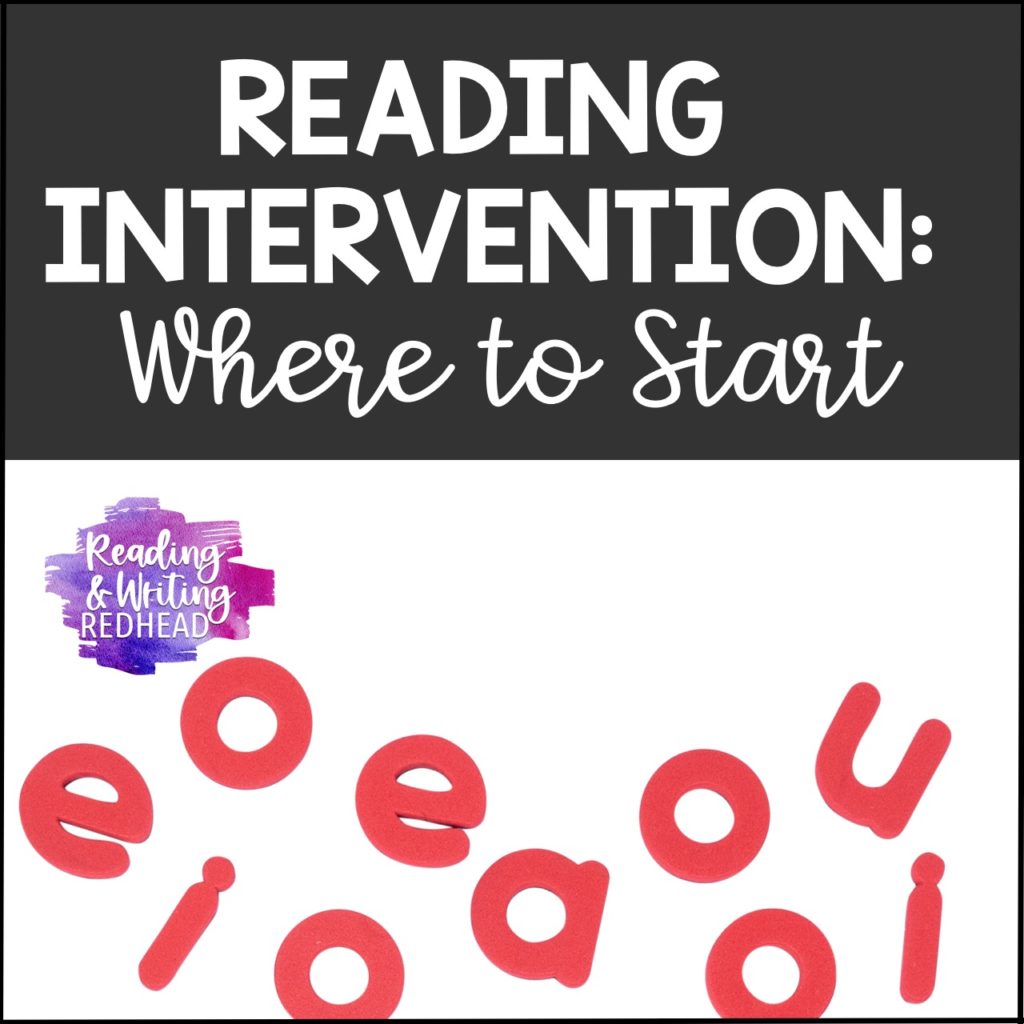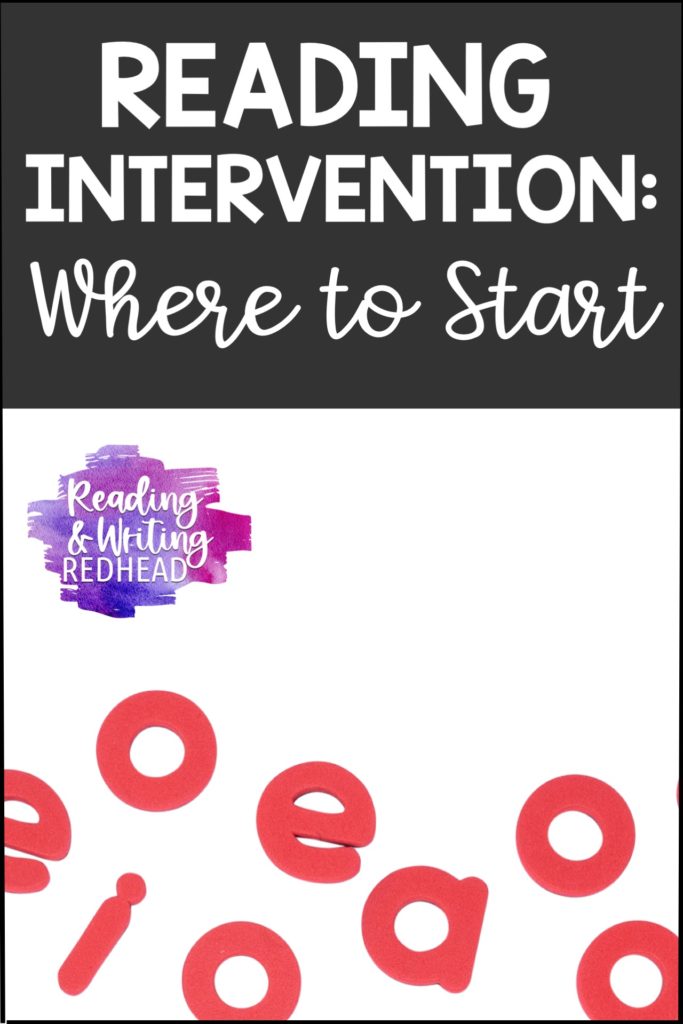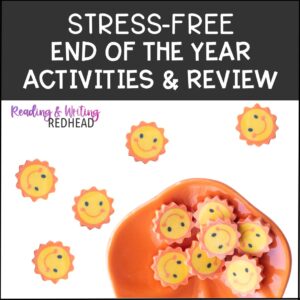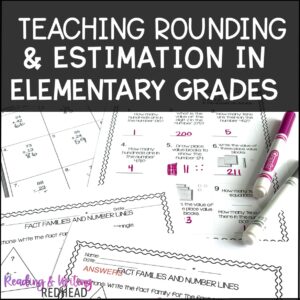
Hey teachers! This is the start of a four part series that will help you teach reading intervention in class (or if you’re an intervention teacher, in or out of class) with students that are struggling in reading. Today we are going to talk about reading intervention: where to start!
If you have kindergarten or first grade students, or even struggling second graders, do a letter identification check. If students cannot identify most or all of the upper and lower case letters A-Z, you should do some intervention in small groups or 1:1 with letter identification.
LETTER IDENTIFICATION
What is letter identification, anyway? It is the skill of students can say the names of the lower and upper case letters of the alphabet quickly, within 2- 2.5 seconds. This is important in developing reading skills. A letter name may give a student an idea or clue on what sound the letter makes, which is helpful when the student tries to read the word.
How to work on letter ID: Read lots of alphabet books with your class! In a small group you can have students find letters in their name, make and name letters with PlayDoh (keep reading for information on how to get a freebie), trace letters, use magnetic letters (find certain letters) and letter matching (show a letter and have the student find a letter).
PHONEMIC AWARENESS
While you are working on letter id, you can start teaching phonemic awareness. This is the understanding that spoken words are made of individual sounds that are called phonemes. A phoneme is the smallest unit of sound we hear in a word. With phonemic awareness, we want students to listen for the individual sounds or phonemes in a spoken word. For example, the four sounds s/t/o/p can be blended to make the whole word stop.
Students need to understand that words are made up of individual sounds, and they can blend, manipulative and also segment the sounds. FYI: phonics involves printed words – phonemic awareness are the sounds they hear. This is a vital part of your reading intervention.
How to work on phonemic awareness: rhyming activities, reading rhyming poems, and anything relating to rhyming is a great idea. Counting syllables (I put my hand under my chin and tell students that every time my chin hits my hand, it counts as one syllable), connecting onsets and rhymes (say “/p/” “/ig/”, than ask kids to combine them and say “pig”, and break apart multisyllable words (break doorknob into two syllables, door and knob).
This book by David Kirkpatrick was SUPER helpful to me. It’s called “Equipped for Reading Success”. Click here for more info at Amazon.
More reading intervention ideas will be coming your way next week! Do you have any tips you would like to add about reading intervention: where to start? Comment and let me know!
BLOG POST SUGGESTIONS FOR FURTHER READING:
- 5 Frustrating Myths about Teaching Reading
- Fun Ways to Practice Spelling Trick Words
- Dos and Don’ts of Teaching Reading
- What is Phonemic Awareness?
- What is Phonological Awareness?
- 10 Phonics Tips
Also, if you want to grab a freebie set of letter mats for Play-doh (Great for practicing letter identification), click here and sign up for the RWR Insiders Club (free, unsubscribe at any time of course) and the freebie will be yours!)





